I just spent the last two hours recording a podcast for Comic Shenanigans concerning making comic books in the 1990s, which means that I’m both getting to this Newsletter later than usual and that I’ve already talked myself pretty much out about old comic books. Fortunately, I’ve kept the quality bar low over the past 84 releases, so this week’s entry hopefully won’t be too much of a disappointment. It’s also a good thing that I set up as much of the architecture of these pieces ahead of time as I do—as now it just means filling in the blanks with a few thousand words. So welcome to Sunday morning, everyone!
To begin with, I’m going to share a bit of nonsense from my office. Now that we’ve been working in person again, we’ve begun to personalize out work spaces once more—they were all cleared out when the Pandemic hit so that the space could be overhauled with prevention in mind. Anyway, whenever I grab lunch from the local eatery downstairs, I often buy a cookie for desert. And I’ve started taken to writing an aphorism on the square cards that the cookies sit upon in their packages, and posting them on a bulletin board beside my desk. It’s a way to reinforce certain core ideals that I’ve picked up over the years from the media that I’ve watched. And so, here’s where that stands right now:
And I was thinking, why don’t we make a little bit of a challenge out of this? A nontest, as it were (a nontest is like a contest, but without any particular rules or regulations where everything is at my discretion.) Let’s see if any of you can correctly identify the sources of the twelve quotes laid out above. Even better if you can do it without scouring the internet that you’re reading this on, but I’m resigned to the fact that google is going to be most readers’ first go-to move. Anyway, the first person who can correctly identify where all twelve to my satisfaction will receive some ridiculous and worthless piece of junk that I have hanging around my desk-space as a prize. And you’ll get extra points if you can intuit not only where these lines come from but why they’re there in the first place. Should be fun, right? Well, get at it—but maybe finish reading this Newsletter first.
Right! Time for the Meet The Press segment where I attempt to answer questions from the readership, and provide fodder for any number of semi-legitimate comics sites to generate hits with provocative headlines!
Evan “Cool Guy”
Can you tell us about some of the ways this change has affected comics over the course of your career?
Evan is talking about the change in the median age of comic book readers over the course of my career, from pre-teen to mid-thirties. I think the biggest shift is that the fans won, but in winning, they may also have lost a little bit. By which I mean that, when I started out, what fans wanted most is respectability. They wanted comics to be acknowledged as an art form, and they wanted material that was adult and challenging—or at least violent and sexy and provocative. And they wanted it known that comic book super hero adventures weren’t just for kids. All of that has come to pass. But now the shoe is perhaps on the other foot. It’s more difficult than ever to find mainstream super hero material that is appropriate for a teen audience. It isn’t impossible, but more and more of everybody’s output has been geared towards the aging fanbase.
Mikel Navarro
I'm a graphic designer specialized in visual identity and pop culture, I've designed some logos for independent comics (and even adapted a Marvel’s one for its Spanish edition) and I would love to one day design some logos for Marvel. I would like to know if there is any way to submit portfolios or be considered for that type of work.
Well, Mikel, we tend to do most of our modern logo design and overall design work in house rather than jobbing it out freelance. But it certainly couldn’t hurt to send some of your samples into us, in case some opportunity opens up. I’d maybe direct them towards Jeff Youngquist, who is in charge of our collections division among other things.
Paul F
in response to your discussion of Nick Cardy's work at DC and Bat Lash in particular I wanted to let you know they collected most of the 70's run, if not all of it, in a black & white Showcase TP. It's pretty affordable on Ebay and doesn't look half bad without color.
You weren’t the only person to point this out to me, Paul. And indeed, I have a copy of this volume purchased when it first came out. But I kinda don’t consider the Essential volumes and the similar DC Showcase volumes to be true Trade paperbacks. They’re more reading copies—and while the art is sometimes lovely without the color, that isn’t really the way it was meant to be seen. But you’re right, such a volume is available should people want to track it down and experience Nick Cardy’s excellent work for themselves.
JV
Tom - what do you think is the appeal of a character like the Punisher in this modern age?
As a kid in the 80s I found the 'vigilante' tough guy character iconic (all action/cop movies of the 80s were a variation of the 'guy who ignores the rules')..but I often wonder is it a thing of the past? I still love the archetype and the 'old school' one man vs an army stories..but maybe that's just my own nostalgia.
I think it’s definitely an archetype that still works, JV—one that may never get old. For all that we know that in real life this approach doesn’t work at all, there’s always been something intrinsically appealing about a strong, righteous man who steps out of the shadows to cut through the red tape of society and to make things right with his bare hands and moxie. From a storytelling point of view, the strong man who never misses, who never chooses wrong, who always gets the bad guy and who isn’t cowed by the weaknesses of excessive morality is a very potent image. The particulars may change—maybe he’s a cowboy, maybe he’s a cop who plays by his own rules, maybe he’s an activist who breaks the law in pursuit of a higher justice, maybe he’s not a he at all—but the element of singular empowerment and catharsis is always going to be potent. Who doesn’t want to be like that, when you come right down to it? We know that the law doesn’t always work as we’d like it to, that bad people often get away with bad things and that good or innocent people sometimes suffer or are wrongly incarcerated. So a fantasy figure who never gets any of this stuff wrong and who is mighty enough to deal with any challenge is reassuring.
Alex Segura
My question is about THE PUNISHER - I was lucky enough to read the first issue, and I really dug it. Not only for its efforts as a standalone comic, but in terms of the bigger picture, i.e. revamping or rebooting (it feels much more like the former) of an established character. Can you talk a little bit about this process and maybe how it's been similar or different to past efforts with other characters you've been involved with? It felt like the creative team really got the essence of what makes the character interesting, and that strikes me as the core challenge when trying to reframe an established hero or concept.
Glad you enjoyed PUNISHER #1, Alex—and to all of you folks who haven’t read it yet, it isn’t too late! Be like Alex! As to your question, there’s only going to be so much that I can get into it here as the story isn’t over yet, and it would require revealing too much about what is to come to lay all of my cards out here. But my approach was to identify which elements of the classic Punisher I thought were at the heart of his appeal, and what aspects of the character had aged poorly, or had drifted away from best practices over the years. That all informed our creation of Joe Garrison—and for all that a bunch of people asked when the project was first announced why we didn’t differentiate him more, make him a different ethnicity or a woman or whatnot, the answer from my point of view is that we weren’t looking to reinvent eh wheel here. Rather, we were looking to create a new sturdy wheel, one that could potentially bear the same weight that Frank Castle had, but be different from Frank in a number of key respects. You’ll get to see what those respects are across the rest of this initial series.
Jim MacLeod
When a creator pitches a big status-altering storyline (like the Krakoan era) does that pitch include how to undo it or move to the next era? Are there pieces of Fall of X that were included in the original Hickman pitch?
Generally speaking, Jim, creators don’t pitch big status quo-changing storylines with a built-in get-out-of-jail-free card. You need to believe in what you’re building , and get the readership to invest in it, so you can’t really afford to keep one foot out of bed. that all said, there are aspects of what Jonathan laid out in his initial planning documents that are a part of the FALL OF X storyline—though some of them are used in ways that aren’t exactly what Jonathan proposed in his original documents. But I really can’t say much more without potentially spoiling something.
Chris Sutcliffe
Following on from this issue's opener, I'm curious if there have ever been examples of negative sentiment changing a story?
I’ve been trying to think of an instance when that’s happened, Chris, and largely it hasn’t really been an issue. Negative reaction can lead to poor sales, which inevitable will change a direction, but that isn’t quite what you’re talking about, I don’t think. And once in a while a writer gets feedback on what they’re doing and wants to change the trajectory of their story—to change who the murderer is, for example—but in those cases, I inevitably advocate against doing so. Probably the best example of this approach going wrong was DC’s ARMAGEDDON 2001 Annuals from the 1990s, in which the true identity of the villainous Monarch leaked to the fan community, prompting the creative team to change their reveal on the fly. The end result was a mess that was satisfying for nobody, not the creators, not the audience, no one. There have been cases where a negative response has caused a correction in future stories, warranted or not—for example, there was a point during the Spider-Man Clone Saga where, having just learned that he wasn’t the original Peter Parker as he believed but rather a clone, Spider-Man backhanded Mary Jane in a manner that some found upsetting. This reaction led to the next couple of issues playing things incredibly safe especially where MJ was concerned, until equilibrium was once again found, .But that isn’t quite what you’re asking about either, I expect.
Jeff Ryan
The best stories we ever read, we read when we're 12. As an adult, we look back and some of it may be great, and some of it was only great because we were 12.
What stuff did you read when you were 12 still stands up to your now-adult eyes as tremendous work by artists at their creative peak?
That’s an interesting question, Jeff. So let’s see. I would have been 12 in 1979, so let’s see what was going on around that period. Certainly the Chris Claremont/John Byrne run on X-MEN has stood the test of time, as has Frank Miller’s era of DAREDEVIL. I’d say that Marv Wolfman and George Perez’s NEW TEEN TITANS is still strong after all of these years, as is the David Michelinie, John Romita Jr. and Bob Layton era of IRON MAN. And not that I was reading it at that point, but Dave Sim’s CEREBUS is a really strong book until the point where it goes off the rails (which different people will place at different points.) Likewise, Richard and Wendy Pini’s ELFQUEST.
Cory Strode
First off, congratulations on the X-Men gig. My questions about it are more about your philosophy going into the job:
Appreciate you writing in with all of these cogent questions, Cory, but I need to stop you right there. because I’m not going to really be able to answer any of them before my era’s books start coming out, not without giving the entire game away. Sorry about that—but that’s the bedrock of the situation. I don’t want to be pulling focus from what the current teams are doing, nor to tip my hand too much as to what my plans might be. So maybe we can get to these in the future.
Marvel used to bill itself as "the world outside your window" and some books are like that with some SF concepts (Spider-Man and Captain America come to mind), but there have been a lot of things that feel like they would have been HUGE changes like multiple public alien invasions (there was one year we had two big alien invasion crossovers), nearly instant intergalactic travel, massive destruction of major cities, and so on. But the people of the world seems to be living normal lives like the rest of us when any one of these things would cause MASSIVE shifts in society. Am I just having trouble suspending my disbelief, or is it something outside the scope of the stories you are telling?
I think this is just the buy-in to a certain degree, Cory, though you may not have felt it in the same way. But certainly, the notion that the inventions of Reed Richards or Tony Stark should have altered the fabric of society in innumerable ways isn’t really a new idea. But the reality is that what we’re producing here isn’t speculative fiction so much as it is relatable super hero adventure fantasy. And as such, you want the world that our characters operate in to remain reflective of the world our readers inhabit. And that means that sometimes the hand of God steps in to repair catastrophic global damage or to prevent the fabric of life from being distorted too greatly by events.
Behind the Curtain
Here are a couple blast from the past images, from 1992 and 1993 if I’m remembering correctly.
What you see here are the two sets of Marvel Editorial Trading Cards, which were produced as a fun convention giveaway. Every editor on staff with a job title above a certain level got a run of these cards, which contained fun personal facts and a space for a signature on the backs. They were popular enough that a bunch of folks in areas other than Editorial wanted to get in on the action, which is why you’ll see people in the above images whom you may not recognize, even if you’re super-familiar with the Marvel of the early 1990s. While these cards were based on templates that we had created for the actual MARVEL UNIVERSE TRADING CARD sets, they were actually put together and produced by the Promotions department. Each person was given a small budget to get their own card caricature done—as you can see, I used the same image both years, as executed by Rodney Ramos. I didn’t actually commission that piece, I stalled on doing it as I found the entire exercise a bit embarrassing—it was my first Assistant Editor Sarra Mossoff who prevailed upon Rodney to knock out the card art that first year at the eleventh hour. I still have a small stack of my cards to this day, though I give them out only infrequently.
Pimp My Wednesday
Some crazy releases rocketing at you this week!
Now really, is there anything that I could tell you that would possibly equal the awesome majesty of this FANTASTIC FOUR #13 cover? Executed by Alex Ross from a prompt by Ryan North, it’s the reason that all of you are going to pick up this issue, because it’s simply that awesome. And rest assured, the story inside, illustrated by Iban Coello, is similarly great. But this cover sets a new high water mark.
I also quite like this cover by Javier Garron for UNCANNY AVENGERS #4—even though it isn’t quite 100% representative of the events that you’ll find within. But you will learn the identity of the person who has usurped the identity of Captain Krakoa before the issue is finished! The words are by Gerry Duggan, who will be very sad if you don’t experience them for yourselves.
And in AVENGERS UNITED, we move into the second act of our 25-part ATROCITY storyline, which is entitled THE FEAR TEACHER. What could be more heart-stopping than the alien Brute the Avengers prevented from assassinating an alien Ambassador last chapter? Writer Derek Landy and artist Phillip Levy will show you.
And just in time for the release of THE MARVELS, which is in theaters now, Associate Editor Annalise Bissa put together these three Infinity Comics, each of which functions as a primer on one of the key characters of the film; Ms Marvel, Monica Rambeau and the Flerken. And they’re all available to read right this moment!
A Comic Book On Sale 60 Years Ago Today, November 12, 1963
I think we can all agree that, as master super villains go, the Mandarin hasn’t really aged well over the past sixty years. Strange to think that he was Iron Man’s big arch-enemy for so many years, when he hasn’t really played much of a role in the books for a decade or more, And that’s obviously because the Mandarin was created in the image of other previous “yellow peril” characters such as Fu Manchu. He’s a racial caricature more than a character, and all efforts to update or rehabilitate him over the years have failed completely. His first appearance happened 60 years ago today in the pages of TALES OF SUSPENSE #50, which you se above. It’s an issue that has another interesting facet to it. You see, when the super hero books were first starting to get rolled out by Marvel, editor Stan Lee didn’t want to be writing them all. He had enough to do with his editorial duties and a couple of key writing assignments that kept him busy. So he brought in other writers to try their hand at a number of the new Marvel books. in the case of Iron Man, this started with his brother Larry Lieber, who wrote the first Iron Man tale, and continued with Robert Bernstein who came on a few issues later. But neither of them really worked out—neither of them could capture the specific sort of a voice and approach that Lee was trying to create across the line. Sales on TALES OF SUSPENSE lagged, and in an attempt to get things back on track, Lee prevailed upon Steve Ditko to pencil a few issues and to redesign Iron man so that he felt more obviously like a super hero. This was standard operating procedure for Lee when a strip was lagging—mess around with the formula, introduce some sort of a change, and hope that things would improve. And if they didn’t, axe the strip. Anyway, in addition to this, Lee himself began scripting the Iron Man strip (at least for a couple of issues, until he tried turning it over to Don Rico, with lackluster results.) And this all gets to the other facet that this issue had: it was the first time that artist Don Heck had to craft a Marvel story using what became known as the “Marvel Method.” Put simply, rather than the writer creating a detailed full script that described what was to be drawn in each panel and what copy and dialogue would be lettered into each panel, in the Marvel Method, Lee provided the artist only with a sketchy idea as to what the story would be about. In later years, Heck would say that Lee would typically give him the villain, the opening and the ending, but he would leave it up to Heck to fill in the rest of the blanks and to devise most of the incident that happened between the two throughout the story. I spoke to Don at length about this story in the early 1990s, when we reprinted it for the first time in the first Iron Man MARVEL MASTERWORKS Hardcover. And the reason it was the first reprint is that Marvel’s reproduction department couldn’t locate the stats for the story which would be used to reprint it. With few other options, i wound up hiring Heck to re-ink the entire story again, keeping it as close to the original as he possibly could. He remembered drawing the story for the first time on Fire Island, a vacation spot, and feeling like there was no way that he could generate a complete job from what little Lee had given him to work with. But of course, Don got the hang of it, and came to appreciate the benefits of the Marvel Method in terms of giving the artists greater control over the visuals and the pacing of events. This meant that the visuals in a Marvel book tended to be more kinetic and interesting than what the competition was putting out, and that the copy could be more concretely tailored to the images. It also meant that the artists were forced to take on a greater portion of the plotting, but that was the trade-off for working at Marvel. Some loved it, some felt taken advantage of by it. But it was definitely one of the secrets to Marvel’s success.
A Comic I Worked On That Came Out On This Date
The first issue of ALL-NEW CAPTAIN AMERICA hit the stands on November 12, 2014. It was written by Rick Remender with beautiful artwork from Stuart Immonen. More importantly, it promoted perennial second banana sidekick Sam Wilson into the star position, making him Captain America and the headliner of the series. He was attired in a modified version of the classic Captain America costume that was designed by the late Carlos Pacheco. Turning the Falcon into Captain America was a move that Rick had built up to across more than a year’s worth of stories, though it wound up being a vexing turn for him. At the Marvel Editorial Retreat at which he first laid out his plans for making Sam into the new Captain America, Jason Aaron revealed that he was planning to cast Jane Foster as the new mysterious Thor. Jason’s book got announced to the world first, on The View, a major media platform, which made Rick feel as though his thunder had been stolen. He still hit the book with everything he had, but he also felt a bit ill-treated as a result. We had to pause ALL-NEW CAPTAIN AMERICA for the SECRET WARS crossover that was going to destroy and re-create the Marvel Universe, but by the time the dust settled, Rick had moved on, leaving Sam in the hands of new writer Nick Spencer. Of course, the fact that the Marvel Cinematic Universe has followed a similar course shows that these efforts weren’t in vain. Rick also took advantage of his new lead character to clean up a troubling aspect of Sam’s past, one that vexed both of us. In a story in the 1970s, it was revealed that Sam wasn’t really a good guy after all, that he’d been a low-level crook known on the street as “Snap” Wilson, and that the Red Skull had used the Cosmic Cube to turn him into Captain America’s partner as a long-term plan to demoralize his old enemy. There’s some evidence that this revelation was going to be revealed to be a lie, a deliberate mistruth, but before that could happen, the book passed into other creative hands, and Sam was stuck with this new background. Rick did the simple and smart thing in issue #3 by revealing that the opposite was true—that the “Snap” Wilson story was the creation of the Cosmic Cube, and that Sam was the upstanding figure that he’d always been presented as.
Monofocus
I started watching MY HOME HERO on Hulu, which is a live action drama based on a popular manga. It’s the story of a middle aged salaryman Tetsuo Tosu, whose daughter Reika begins dating an abusive boyfriend with ties to the underworld. When it looks as though the guy is going to murder his daughter, Tosu winds up killing him, an act that sets off a chain of events that imperils both himself and his family. Fortunately, Tosu is a mystery writer, so he’s acquainted with matters such as how to dispose of a body, and his clever ness enables him to stay one step ahead of the killers while simultaneously getting in deeper and deeper. The show is currently running in Japan, so Hulu is releasing the episodes weeks. So far, it’s a really good ride. I also appreciate the fact that each episode is only around 24 minutes long—I’ll sample just about any show that’s as short as this, because the buy-in is so easy in terms of sunken time costs.
And FOR ALL MANKIND has started its fourth season on Apple TV+. While the third season was a bit rickety in terms of its plotting and its character work, this still remains a top flight bit of speculative fiction, based around the notion that the Soviet Union beats the United States to be the first to land on the moon. We’re now in the early 2000s, and working towards establishing a self-sustaining colony on Mars. Despite the passage of time, actor Joel Kinnaman’s Ed Baldwin remains the XO of the mission, despite the fact that he would surely have aged out of the space program by this point. But, hey, that’s television for you. Based on the first episode of this new season, the show still maintains its THE RIGHT STUFF appeal of brave men and women putting their lives on the line to open up new horizons for mankind. It’s a show that’s got a great ethos about it, and that makes its shortcomings forgivable.
Posted at TomBrevoort.com
Yesterday, I talked about when Fred Hembeck interviewed Roger Stern in the pages of FANTACO CHRONICLES #5
And five years ago, I wrote about this issue of JUSTICE LEAGUE OF AMERICA co-starring the golden age Justice Society of America and the 30th Century Legion of Super Heroes.
All right, get out of here, you yahoos! And remember: THE MARVELS is now showing at a theater near you, so why not sneak in a viewing?
Hat’s All, Folks!
Tom B




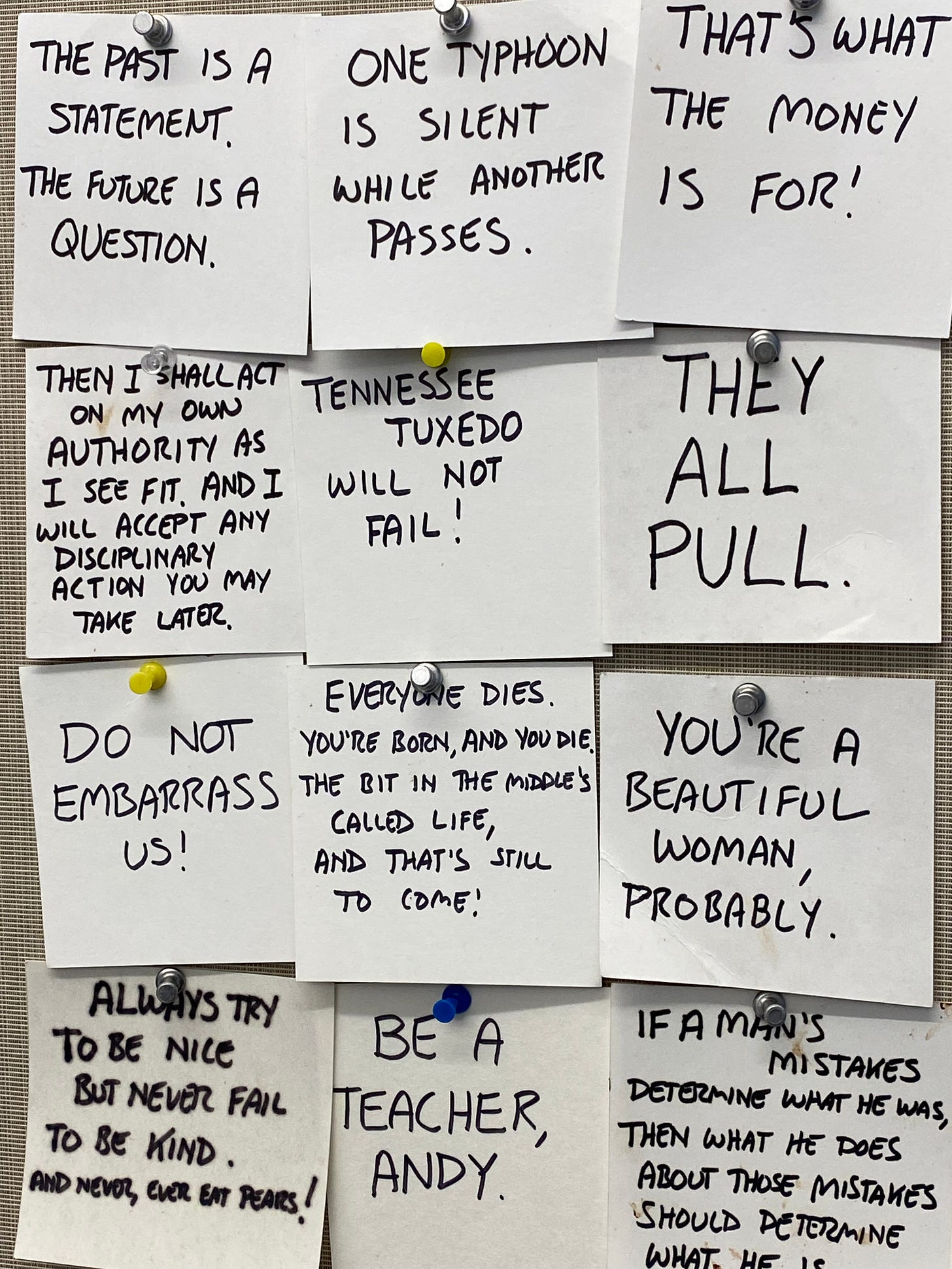

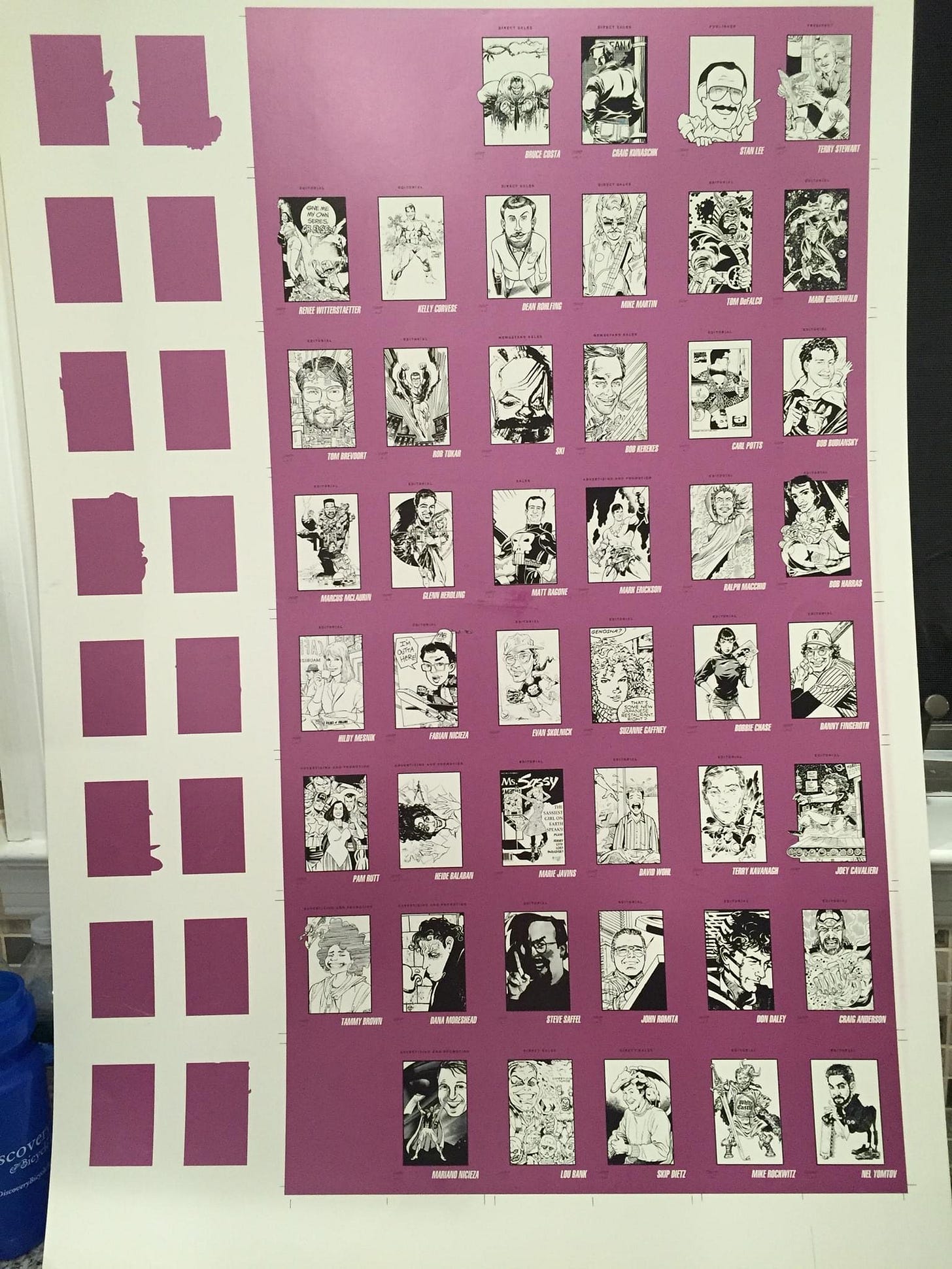
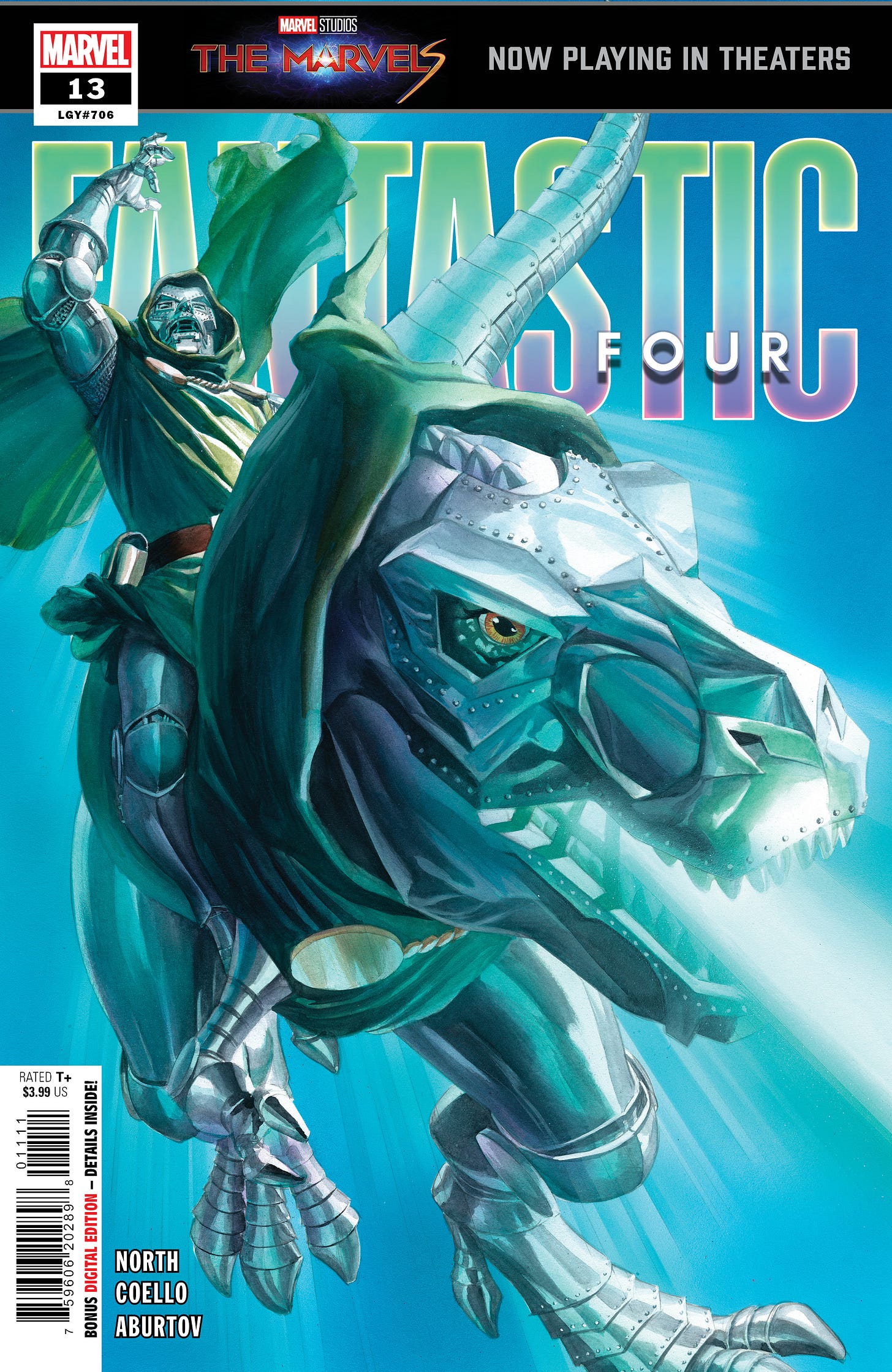
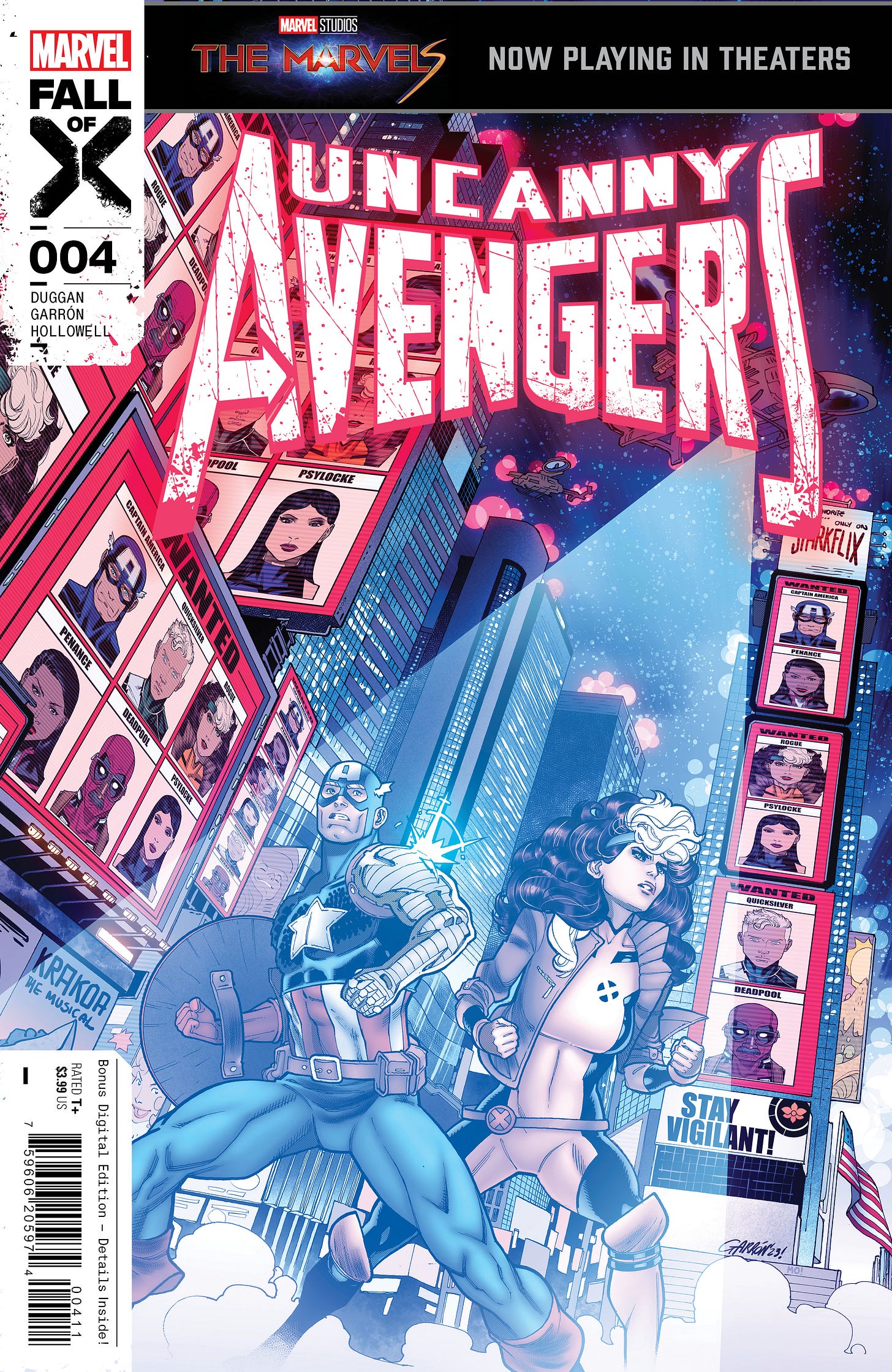




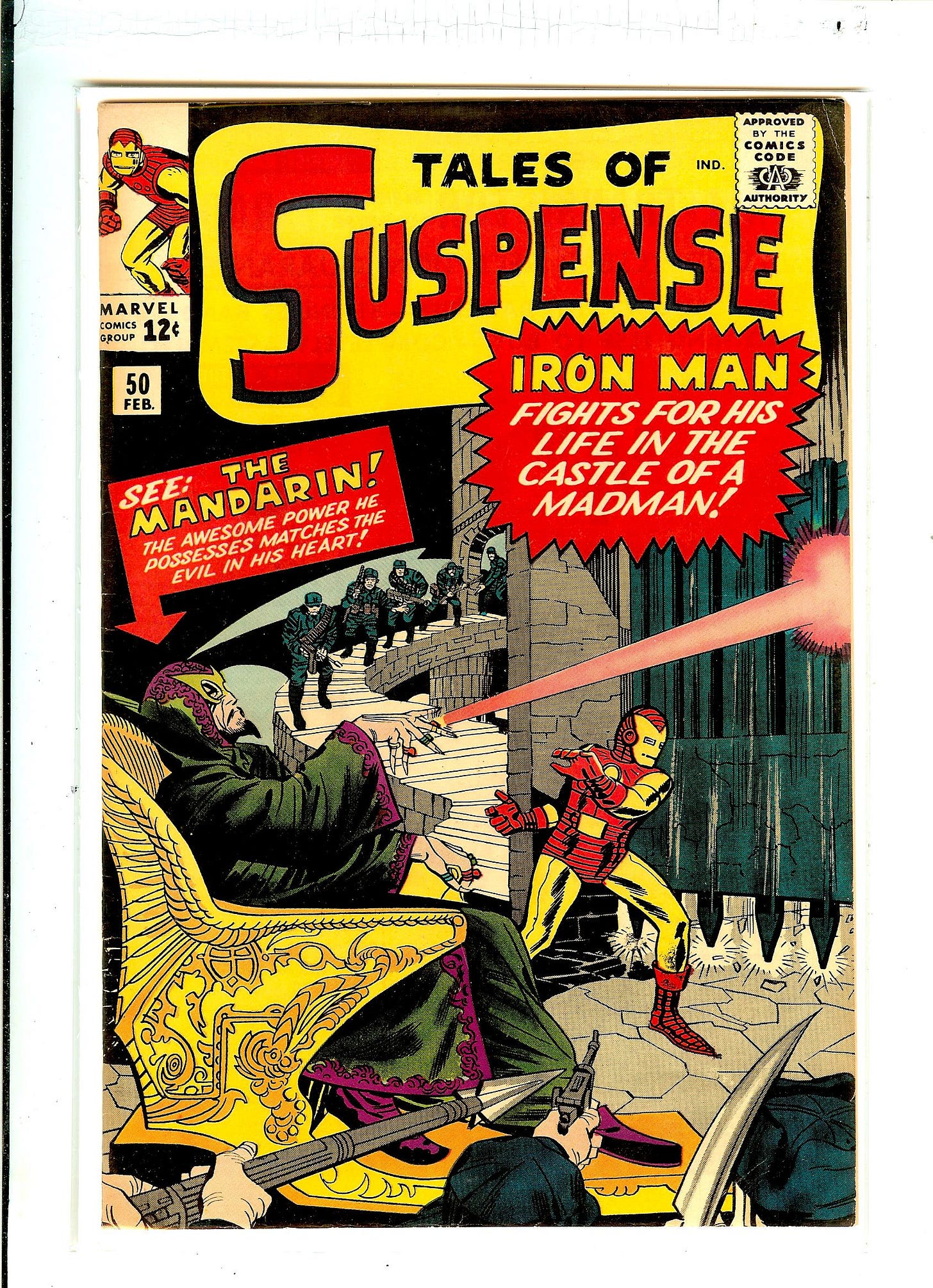
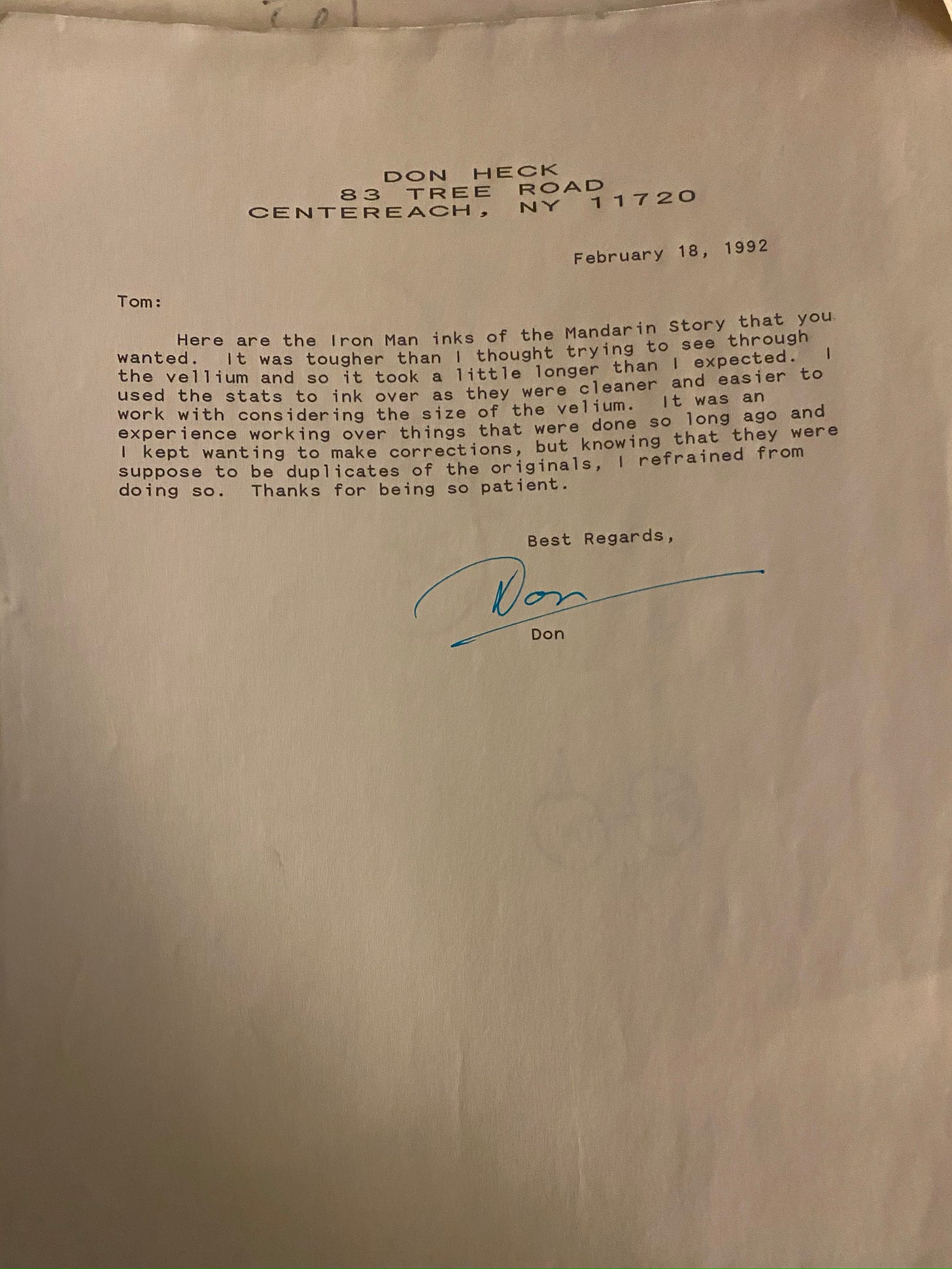
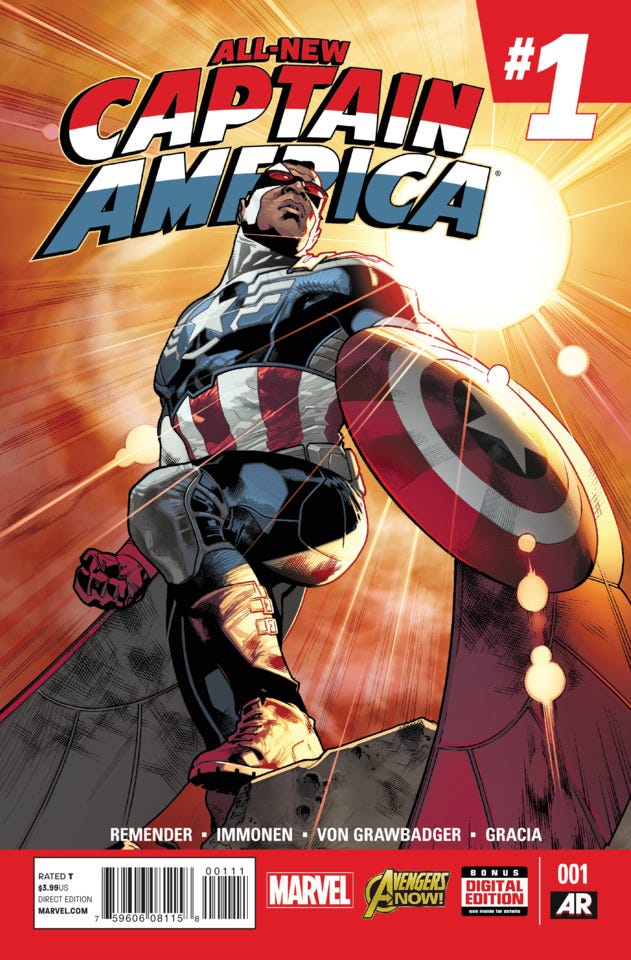
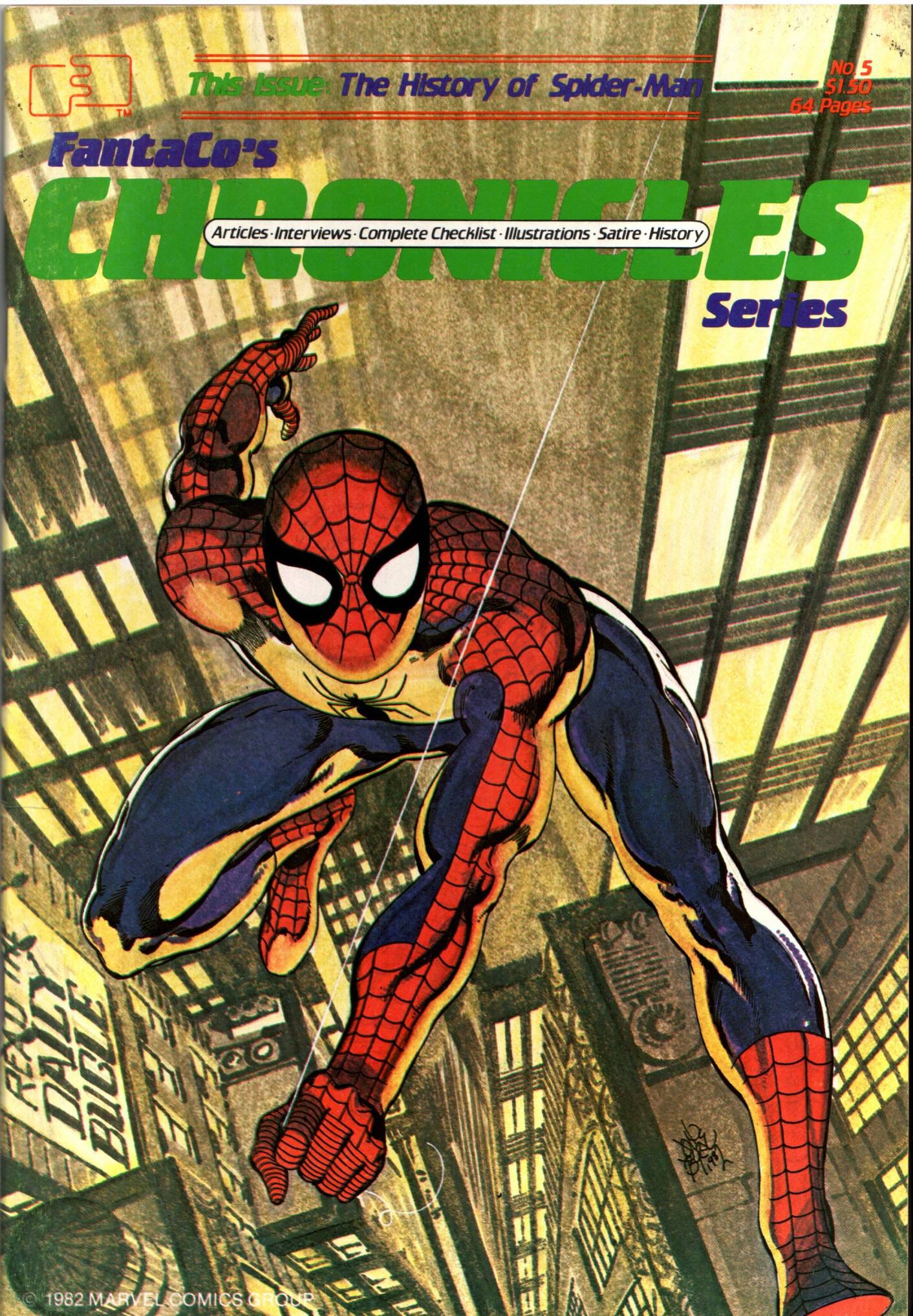
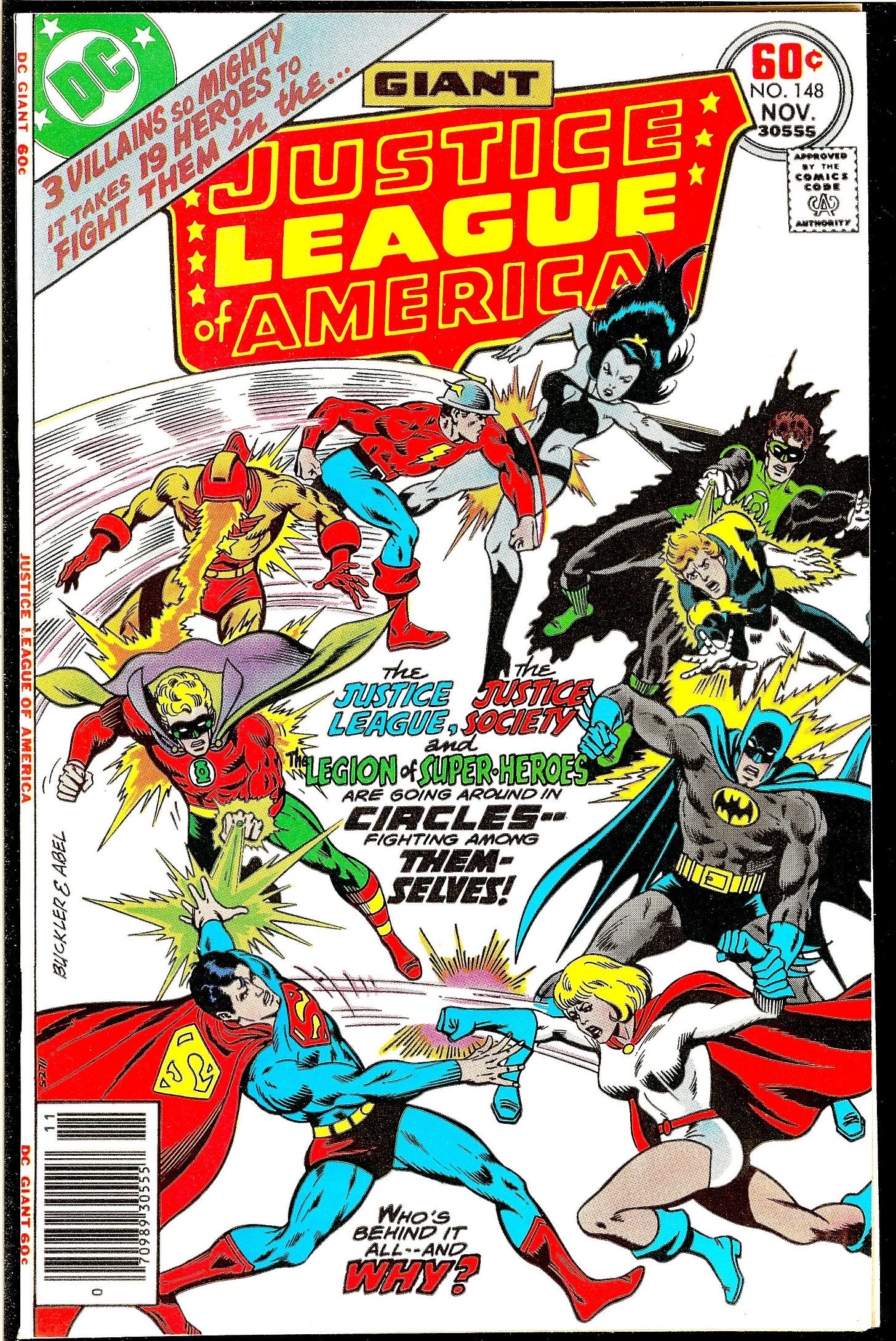
"I’ve kept the quality bar low over the past 84 releases?" I know you're joking but rest assured this substack is one of the best reads and highlights every time it comes out. Thank you again for this.
My question this week: Should we [unfortunately] look for more Marvel comics to have a $4.99 cover price soon? I know DC did it first with having that as the regular price point for Batman and Superman, and I know economics are hard for everyone. Personally speaking, though, I've had to give up on monthlies that I enjoyed because I just can't afford them anymore. Maybe my better question is "will there still be room for $3.99 books?"
Thanks for another fine newsletter, Tom.
Your answer to Mikel raises a question I've been meaning to ask for some time: back in the days of yore, the Marvel Bullpen (such as it actually existed) consisted of the in-office art and production staff: in various eras, John (and Virginia) Romita, Marie Severin, Herb Trimpe, Sol Brodksy, Morrie Kuramoto, et. al. What, if anything, does that staff look like in 2023? Is there still a staff department that makes, say, last-minute artistic corrections on a book, or is that all done solely with individual freelancers these days?
And it's interesting to hear about the re-inking Don Heck needed to undertake for that Masterworks volume. I know that this sort of thing happened from time to time in the absence of original art stats (including one particularly notorious Spider-Man page that had to be entirely re-drawn). Are there any other particularly noteworthy instances you encountered where, ah, creative re-creations had to be done?